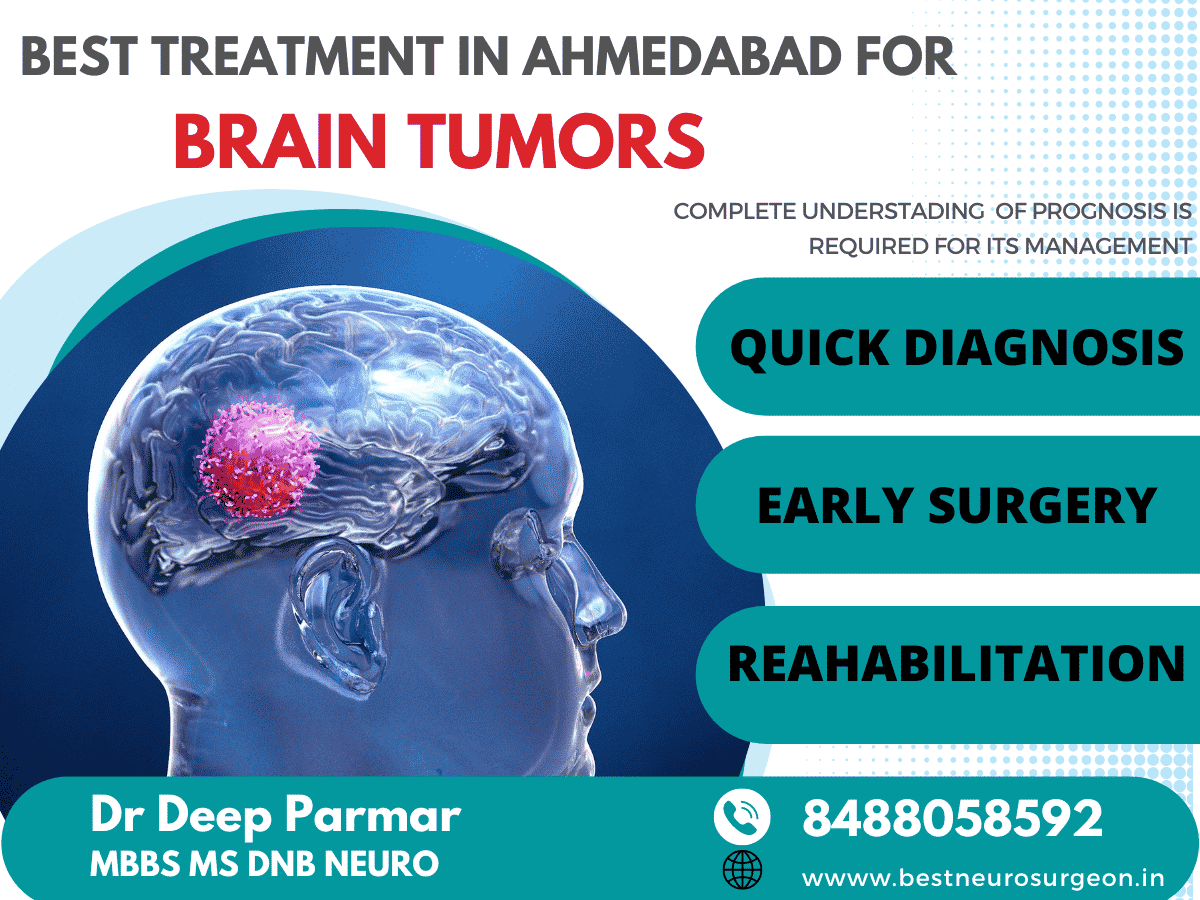
What is a brain haemorrhage?
A brain haemorrhage is essentially a type of stroke. A brain haemorrhage occurred when an artery in the brain bursts and causes localized bleeding in the surrounding tissues. Or blood vessel of the brain has Aneurysm or AVM in its course, which has ruptured and caused a brain haemorrhage. This bleeding kills the cells in the brain. Brain haemorrhages constitute around 23% of strokes. Dr Deep Parmar (8488058592) is the best neurosurgeon in Ahmedabad. He deals with all brain-related and spine related problems if an efficient way.
Causes of brain haemorrhage
Several causes and risk factors of a brain haemorrhage include:
The most common is Head injury or trauma: A severe head injury or trauma caused to the head by an accident
An aneurysm occurs when there is a weakening in a blood vessel wall that swells. It can burst and cause bleeding inside the brain, hence resulting in a stroke.
High blood pressure: High BP can, over time, result in the weakening of blood walls. High blood pressure should be treated to avoid brain strokes.
Blood vessel abnormalities: Weak blood walls around the brain may be present since birth and may only be diagnosed once the person shows symptoms.
Bleeding disorders: People with bleeding disorders such as skin cell anaemia or haemophilia are at a higher risk of experiencing brain strokes as these can result in a decreased level of blood palette.
Liver disease: This condition, in general, contributes to increased bleeding
Brain tumours: People suffering from a brain tumour are at a higher risk of experiencing brain strokes. Intratumoral bleed is very common if a brain tumour is of long duration.
Amyloid angiopathy: This abnormality occurs in the blood vessel walls due to either ageing or high blood pressure. It may cause many small bleeds before causing a large one.
Symptoms of a brain haemorrhage
The symptoms of a brain haemorrhage occur according to the person’s condition- the location of bleeding in the brain, the amount of tissue affected and the severity of the bleeding. The symptoms may occur gradually or all of a sudden. Look out for these signs:
⦁ Seizures, with no previous history of them
⦁ Sudden and severe headaches
⦁ Nausea or vomiting
⦁ Weakness in the arms or legs
⦁ Lethargy or decreased alertness
⦁ Tingling or numbness
⦁ Changes in eyesight
⦁ Difficulty swallowing
⦁ Difficulty reading or writing
⦁ Difficulty in speaking or understanding speech
⦁ Hand tremors
⦁ Loss of balance and coordination
⦁ Loss of consciousness
⦁ An abnormal sense of taste
How is a brain haemorrhage diagnosed?
The treatment of brain haemorrhage depends on the severity of the condition and the symptoms that the person is showing. This is usually done through an MRI, CT scan or any of the following ways mentioned below:
1: NCCT HEAD: CT scan of the brain is paramount and 1st investigation to rule out a brain haemorrhage
2: Angiogram
This is a procedure in which a catheter is inserted into an artery and passed through the circulatory system leading up to the brain. A dye, which makes blood flow easy to see on X rays, is injected through the catheter.
3: Cerebrospinal fluid exam
Bleeding is indicated if there is any evidence of blood in this fluid
4: Computed tomography angiography (CTA)
In this procedure, the dye is injected directly into the bloodstream. This makes the arteries appear more clearly on the X-ray and CT scan
5: A lumbar puncture
Also known as a spinal tap, this is another procedure to diagnose brain bleeds.
How is a brain haemorrhage treated?
The treatment of a brain haemorrhage depends on the severity and symptoms of the condition. These are how the bleeding is treated:
Surgery
In some cases, traditional surgery may be required to drain out the excess boo in the brain or repair damaged blood cells. NEUROSURGEON is the only doctor who can deal with surgical aspects of a brain haemorrhage. Dr DEEP PARMAR is the TOP NEUROSURGEON OF AHMEDABAD, with more than 5 years of experience in neurosurgery. He has done surgeries on more than 300 cases of a brain haemorrhage. Surgery on the brain is not the cup of tea of many neurosurgeons; it requires highly refined surgical skills. DR DEEP PARMAR is the best neurosurgeon in Ahmedabad best brain surgeon of Ahmedabad.
Not all brain haemorrhage requires surgeries; some of them can be treated conservatively also.
If a CT scan shows a brain haemorrhage more than 5cm in size and causes compression, it should be evacuated. Subarachnoid haemorrhage or intraventricular haemorrhage must be investigated with CT ANGIOGRAPHY. Otherwise, Aneurysm and AVM cases will be missed.
Various surgeries for Brain haemorrhage:
⦁ Craniotomy and evacuation of haemorrhage
⦁ Minicraniotomy and evacuation of haemorrhage
⦁ Endoscopic removal of hematoma
⦁ Craniotomy and clipping of an aneurysm
⦁ Craniotomy and excision of Arms
⦁ Decompressive craniotomy with lax duraplasty
⦁ Endovascular management of haemorrhage
Not all hospitals in Ahmedabad are equipped with facilities to handle such emergency cases of brain haemorrhage, but you can freely consult DR DEEP PARMAR (8480058592) for any issues regarding brain pathology. He is the top brain doctor and top neurosurgeon in Ahmedabad.
Brain haemorrhage is an emergency condition in which a patient needs to get admitted to ICU. So emergency measures are to be taken.
DR DEEP PARMAR is the best brain surgeon in Ahmedabad, who responds in minutes to such emergency conditions. The life of a patient comes first for him.
Contact: DR DEEP PARMAR
Call : 8488058592
Visit: www.bestneurosurgeon.in


